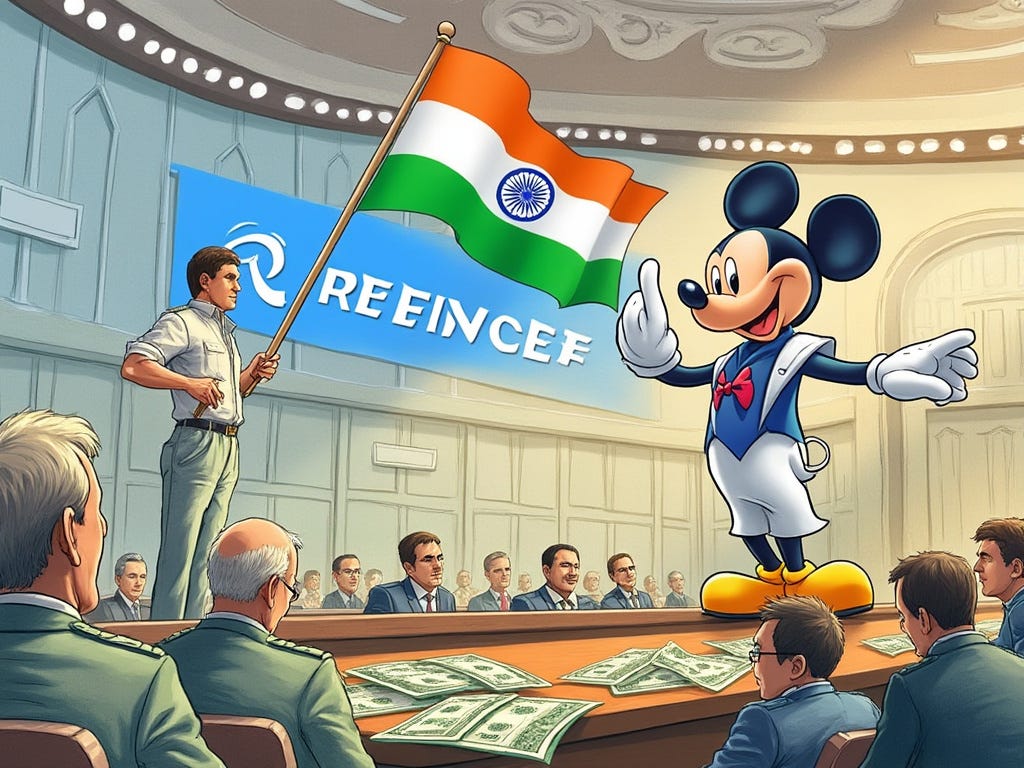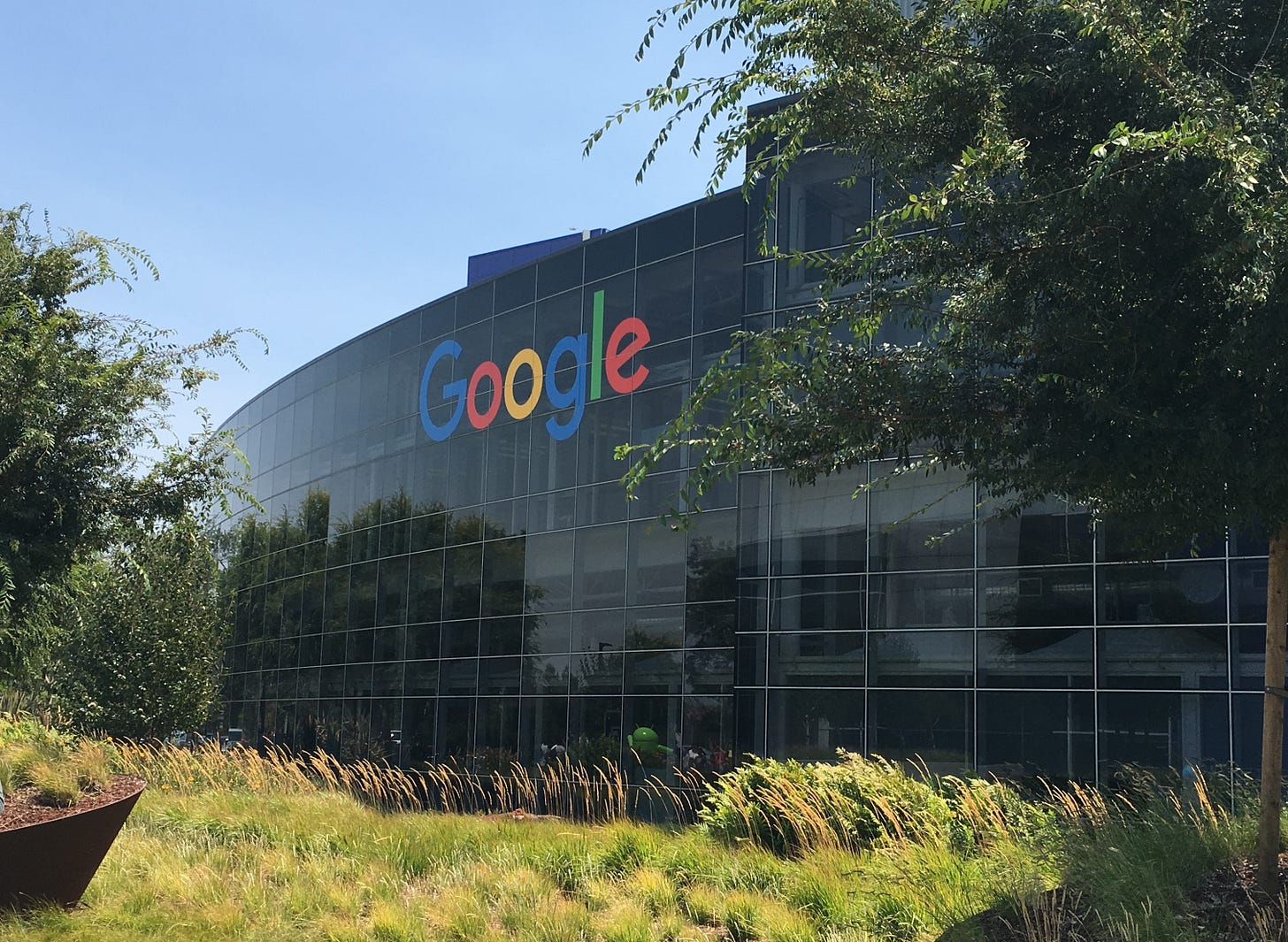Major Regulatory Hurdle Hits the $8.5 Billion Reliance-Disney Merger
Competition Commission of India Issues Notice to Commence Preliminary Enquiry.
CCI’s Regulatory Challenge
Preliminary Scrutiny from CCI
The proposed $8.5 billion merger between Reliance Industries and Walt Disney's media assets in India is encountering significant challenges under the scrutiny of the Competition Commission of India (CCI). Concerns are centered on the potentially dominant position the merged entity could hold in cricket broadcasting, a vital issue given the sport's immense popularity in India. Interestingly, the top market regulator, led by former Punjab cadre IAS officer Ms. Ravneet Kaur, has not issued any notice to the Board of Control for Cricket in India (BCCI).
Concerns Over Cricket Rights and Market Dominance
The CCI's primary worry is the control over cricket broadcasting rights, which could severely impact market competition. The merged conglomerate would command a vast network of 120 TV channels and two major streaming services, raising alarms about a potential monopoly in the Indian media sphere.
CCI's Examination Process
Step-by-Step Scrutiny
The statutory regulatory body has begun a detailed assessment and issued a notice to both Disney and Reliance outlining the concerns. The firms have a 30-day window to respond and justify why a thorough investigation should not proceed. Failure to alleviate these concerns might lead to a more extensive probe.
Possible Outcomes
A decision to further investigate could delay or even jeopardize the merger, potentially setting a significant precedent for future large-scale media consolidations, both in India and globally. Under Indian law, the regulator must have prima facie satisfaction that a single or merged entity would hold a dominant position in the market. This is a condition precedent before a detailed investigation can be initiated.
Potential Impact on India's Media Landscape
Creation of a Media Titan
If approved, the merger would forge a media powerhouse poised to take on global and local giants like Sony, Zee, Netflix, and Amazon. The integration of Disney's Hotstar with Reliance's JioCinema could transform the streaming market, leveraging a combined content library of over 200,000 hours.
Dominance in Sports Broadcasting
Besides extensive entertainment content, the merged entity would possess significant sports broadcasting rights, particularly in cricket, which could redefine viewer experiences and advertising dynamics.
Summary of the CCI's Case Against Google
Stiff $161 million Penalty
On October 20, 2022, the Competition Commission of India (CCI) imposed a significant penalty of Rs. 1,337.76 crore (approximately $161 million) on Google for abusing its dominant position in the Android mobile ecosystem. The CCI cited violations under Section 4 of the Competition Act, 2002, which deals with abuse of dominance, and ordered Google to cease its restrictive practices and amend its conduct within a specific timeline. The allegations against Google included imposing unfair restrictions in the Google Play Store and maintaining control over nearly 98% of India's smartphone app market. The terms "digital feudalism" and "consumer exploitation" were used to describe Google's practices.
First Appeal dismissed; Matter in Supreme Court Now.
Google appealed the decision to the National Company Law Appellate Tribunal (NCLAT), which upheld the CCI's ruling and penalty on March 29, 2023, but revised some of the CCI's original directives. Subsequently, Google sought relief from the Supreme Court of India, which, on January 19, 2023, declined to interfere with the NCLAT’s decision requiring Google to deposit 10% of the penalty. The case underlines ongoing global concerns about anti-competitive practices, particularly the market dominance of technology giants. Google must now deposit the remainder of the penalty amount and comply with the revised directions as per the NCLAT's order. This ongoing legal battle underscores the challenges faced by tech companies in navigating regulatory landscapes in emerging markets like India.
CCI's Scrutiny of Major Mergers and Acquisitions
Diverse Sectors Under Review
The Competition Commission of India (CCI) has been pivotal in examining mergers and acquisitions across a variety of sectors to ensure fair competition in the market. Notable cases include the Sun Pharma-Ranbaxy deal in 2014, where CCI's conditions for approval included divesting certain products to mitigate competition concerns following the $4 billion acquisition. Similarly, the 2015 Holcim-Lafarge merger, which created the world's largest cement company, was greenlighted with mandates for asset divestment in India, reflecting the CCI’s proactive stance in maintaining market health.
Technology and Media Deals Facing Hurdles
In the technology and media realms, the Uber-Grab deal in 2018 saw penalties imposed on both entities for not notifying the CCI about their transaction, illustrating the necessity of regulatory compliance. Meanwhile, the high-profile $10 billion merger between Zee Entertainment and Sony Pictures Networks was scrutinized rigorously, eventually collapsing under the weight of stringent regulatory conditions and internal leadership disputes. Similarly, global mergers in the agro-chemical sector such as ChemChina/Syngenta and Bayer AG/Monsanto Co, were also subjected to CCI’s thorough review, requiring specific remedies to proceed.
Swift Action in Strategic Acquisitions
Furthermore, Tata Steel’s acquisitions of Bhushan Steel Limited and Bhushan Power and Steel Limited were expedited by the CCI, showcasing the regulatory body's capability to fast-track significant transactions arising from insolvency proceedings when necessary. Through these diverse actions, the CCI has demonstrated its commitment to safeguarding competition and addressing anti-competitive practices in India’s rapidly evolving economic landscape.
Setting a Regulatory Benchmark
The CCI’s handling of this merger is poised to become a benchmark for how future media mergers are evaluated in terms of market competition and consumer impact. This case could influence not only Indian but global media consolidation strategies.
Strategic Implications of BCCI's Role in the Media Merger
The resolution of the merger between major media giants in India will significantly influence the competitive landscape of the country’s thriving media sector, affecting how content is created, distributed, and consumed across various platforms. The Board of Control for Cricket in India (BCCI), though not yet a party to the case, plays a critical role in this context. An assurance from the BCCI to utilize multiple broadcasters for cricket matches could decisively mitigate concerns regarding monopolistic control over cricket broadcasting rights. Such a move might effectively resolve major competitive concerns surrounding the merger.
However, the BCCI must navigate this situation with caution. Despite being a private entity, it faces potential accusations of maintaining a near-monopoly in cricket, which is India’s most popular sport. This scenario places the BCCI in a delicate position where its decisions could either exacerbate or alleviate antitrust concerns under the scrutiny of regulatory authorities and the public eye. As developments unfold, both the involved corporations and regulatory bodies remain vigilant, understanding that the outcomes will set important precedents for the media industry’s operational dynamics, not just within India but globally as well.







